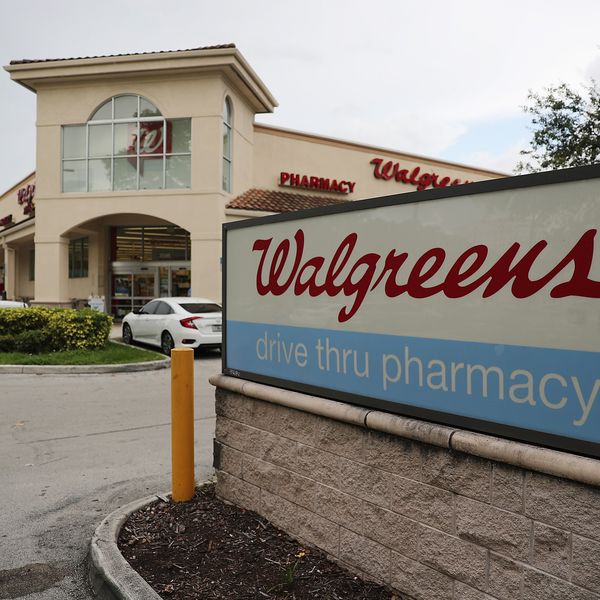Public School Funding: Separate and Skewed
In some states, districts with higher poverty rates actually receive less funding than more affluent districts.
With all the talk about firing "underperforming" teachers, closing the achievement gap, and adopting "common core standards" for students, too many experts are missing a basic source of America's education woes: the inherently unequal and unfair system for funding public schools within each of the 50 states.
"Simply put, many states do not provide sufficient funding or distribute that funding to address the needs of their most disadvantaged students and schools," writes David Sciarra. He's the executive director of the Education Law Center and co-author of a new study on the distribution of school aid. The report, Is School Funding Fair? A National Report Card, co-authored by Dr. Danielle Farrie of the Education Law Center and Dr. Bruce Baker of Rutgers University, reveals that most states are failing the test of fairness when it comes to public school financing. The authors state, and I agree, that "a fair funding system would be progressive in that funding would increase relative to the level of concentrated student poverty." This would ensure more funding would be available to students with greater needs and all students would have the support necessary to achieve rigorous academic standards.
The National Report Card identified four "fairness indicators"--funding level, funding distribution relative to poverty, state fiscal effort, and public school coverage. Based on those measures, only Massachusetts, Connecticut, Vermont, Iowa, Wyoming, and New Jersey are doing "relatively well" on funding fairness. But even in those states, irregularities persist.
Most states are failing. Instead of progressive funding, some states have a regressive system, meaning districts with higher poverty rates actually receive less funding than more affluent districts. Public schools are chronically underfunded throughout the South and in many Western states.
Inequity in public school funding has long been considered a contributing factor to the achievement gap. It's unconscionable that some public school students have access to computers and other state-of-the-art resources, while many of the most disadvantaged students have barely enough books and supplies in their classrooms.
School funding relies heavily on state and local taxes, making it "inherently unequal." This is what Education Secretary Arne Duncan declared at the National Urban League centennial conference in August, adding that "[o]ver 40 states have faced legal challenges to their school funding systems because they are so unfair." He's established the Equity and Excellence Commission, proposed by Representatives Chaka Fattah (D-PA) and Mike Honda (D-CA,) to "expose the inequities in funding, gather public input and issue policy recommendations on finance reform."
This issue will largely be decided outside of Washington, at the state and local levels. About 41 percent of public school funding comes from local revenue and 50 percent from state coffers, leaving funding allocations in the hands of non-federal officials.
If we believe that all our children deserve a quality education and that given the right support all of them can succeed, citizens must demand that their governors and state legislators end public school financing inequities now.
An Urgent Message From Our Co-Founder
Dear Common Dreams reader, The U.S. is on a fast track to authoritarianism like nothing I've ever seen. Meanwhile, corporate news outlets are utterly capitulating to Trump, twisting their coverage to avoid drawing his ire while lining up to stuff cash in his pockets. That's why I believe that Common Dreams is doing the best and most consequential reporting that we've ever done. Our small but mighty team is a progressive reporting powerhouse, covering the news every day that the corporate media never will. Our mission has always been simple: To inform. To inspire. And to ignite change for the common good. Now here's the key piece that I want all our readers to understand: None of this would be possible without your financial support. That's not just some fundraising cliche. It's the absolute and literal truth. We don't accept corporate advertising and never will. We don't have a paywall because we don't think people should be blocked from critical news based on their ability to pay. Everything we do is funded by the donations of readers like you. Will you donate now to help power the nonprofit, independent reporting of Common Dreams? Thank you for being a vital member of our community. Together, we can keep independent journalism alive when it’s needed most. - Craig Brown, Co-founder |
With all the talk about firing "underperforming" teachers, closing the achievement gap, and adopting "common core standards" for students, too many experts are missing a basic source of America's education woes: the inherently unequal and unfair system for funding public schools within each of the 50 states.
"Simply put, many states do not provide sufficient funding or distribute that funding to address the needs of their most disadvantaged students and schools," writes David Sciarra. He's the executive director of the Education Law Center and co-author of a new study on the distribution of school aid. The report, Is School Funding Fair? A National Report Card, co-authored by Dr. Danielle Farrie of the Education Law Center and Dr. Bruce Baker of Rutgers University, reveals that most states are failing the test of fairness when it comes to public school financing. The authors state, and I agree, that "a fair funding system would be progressive in that funding would increase relative to the level of concentrated student poverty." This would ensure more funding would be available to students with greater needs and all students would have the support necessary to achieve rigorous academic standards.
The National Report Card identified four "fairness indicators"--funding level, funding distribution relative to poverty, state fiscal effort, and public school coverage. Based on those measures, only Massachusetts, Connecticut, Vermont, Iowa, Wyoming, and New Jersey are doing "relatively well" on funding fairness. But even in those states, irregularities persist.
Most states are failing. Instead of progressive funding, some states have a regressive system, meaning districts with higher poverty rates actually receive less funding than more affluent districts. Public schools are chronically underfunded throughout the South and in many Western states.
Inequity in public school funding has long been considered a contributing factor to the achievement gap. It's unconscionable that some public school students have access to computers and other state-of-the-art resources, while many of the most disadvantaged students have barely enough books and supplies in their classrooms.
School funding relies heavily on state and local taxes, making it "inherently unequal." This is what Education Secretary Arne Duncan declared at the National Urban League centennial conference in August, adding that "[o]ver 40 states have faced legal challenges to their school funding systems because they are so unfair." He's established the Equity and Excellence Commission, proposed by Representatives Chaka Fattah (D-PA) and Mike Honda (D-CA,) to "expose the inequities in funding, gather public input and issue policy recommendations on finance reform."
This issue will largely be decided outside of Washington, at the state and local levels. About 41 percent of public school funding comes from local revenue and 50 percent from state coffers, leaving funding allocations in the hands of non-federal officials.
If we believe that all our children deserve a quality education and that given the right support all of them can succeed, citizens must demand that their governors and state legislators end public school financing inequities now.
With all the talk about firing "underperforming" teachers, closing the achievement gap, and adopting "common core standards" for students, too many experts are missing a basic source of America's education woes: the inherently unequal and unfair system for funding public schools within each of the 50 states.
"Simply put, many states do not provide sufficient funding or distribute that funding to address the needs of their most disadvantaged students and schools," writes David Sciarra. He's the executive director of the Education Law Center and co-author of a new study on the distribution of school aid. The report, Is School Funding Fair? A National Report Card, co-authored by Dr. Danielle Farrie of the Education Law Center and Dr. Bruce Baker of Rutgers University, reveals that most states are failing the test of fairness when it comes to public school financing. The authors state, and I agree, that "a fair funding system would be progressive in that funding would increase relative to the level of concentrated student poverty." This would ensure more funding would be available to students with greater needs and all students would have the support necessary to achieve rigorous academic standards.
The National Report Card identified four "fairness indicators"--funding level, funding distribution relative to poverty, state fiscal effort, and public school coverage. Based on those measures, only Massachusetts, Connecticut, Vermont, Iowa, Wyoming, and New Jersey are doing "relatively well" on funding fairness. But even in those states, irregularities persist.
Most states are failing. Instead of progressive funding, some states have a regressive system, meaning districts with higher poverty rates actually receive less funding than more affluent districts. Public schools are chronically underfunded throughout the South and in many Western states.
Inequity in public school funding has long been considered a contributing factor to the achievement gap. It's unconscionable that some public school students have access to computers and other state-of-the-art resources, while many of the most disadvantaged students have barely enough books and supplies in their classrooms.
School funding relies heavily on state and local taxes, making it "inherently unequal." This is what Education Secretary Arne Duncan declared at the National Urban League centennial conference in August, adding that "[o]ver 40 states have faced legal challenges to their school funding systems because they are so unfair." He's established the Equity and Excellence Commission, proposed by Representatives Chaka Fattah (D-PA) and Mike Honda (D-CA,) to "expose the inequities in funding, gather public input and issue policy recommendations on finance reform."
This issue will largely be decided outside of Washington, at the state and local levels. About 41 percent of public school funding comes from local revenue and 50 percent from state coffers, leaving funding allocations in the hands of non-federal officials.
If we believe that all our children deserve a quality education and that given the right support all of them can succeed, citizens must demand that their governors and state legislators end public school financing inequities now.

